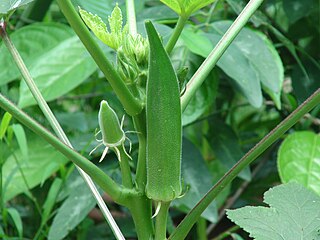
The (IUCN) Red List of Threatened Species, founded in 1964, is the world's most comprehensive inventory of the global conservation status of biological species. It uses a set of criteria to evaluate the extinction risk of thousands of species and subspecies. These criteria are relevant to all species and all regions of the world. With its strong scientific base, the IUCN Red List is recognized as the most authoritative guide to the status of biological diversity. A series of Regional Red Lists are produced by countries or organizations, which assess the risk of extinction to species within a political management unit.

An insectivore is a carnivorous plant or animal that eats insects. An alternative term is entomophage, which also refers to the human practice of eating insects.

The Cyperaceae are a family of graminoid (grass-like), monocotyledonous flowering plants known as sedges, which superficially resemble the closely related rushes and the more distantly related grasses. The family is large, with some 5,500 known species described in about 90 genera, the largest being the "true sedges" genus Carex with over 2,000 species. These species are widely distributed, with the centers of diversity for the group occurring in tropical Asia and tropical South America. While sedges may be found growing in almost all environments, many are associated with wetlands, or with poor soils. Ecological communities dominated by sedges are known as sedgelands.

Okra, Abelmoschus esculentus, known in many English-speaking countries as ladies' fingers or ochro, is a flowering plant in the mallow family. It is valued for its edible green seed pods. The geographical origin of okra is disputed, with supporters of West African, Ethiopian, and South Asian origins. The plant is cultivated in tropical, subtropical and warm temperate regions around the world.

Scirpus is a genus of grass-like species in the sedge family Cyperaceae many with the common names club-rush, wood club-rush or bulrush. They mostly inhabit wetlands and damp locations.
This article gives an overview of the salt-marsh communities in the British National Vegetation Classification system.
Gene banks are a type of biorepository which preserve genetic material. For plants, this could be by in vitro storage, freezing cuttings from the plant, or stocking the seeds. For animals, this is the freezing of sperm and eggs in zoological freezers until further need. With corals, fragments are taken which are stored in water tanks under controlled conditions. Plant genetic material in a 'gene bank' is preserved at -196° Celsius in Liquid Nitrogen as mature seed (dry) or tissue (meristems).

Windsor Hill Marsh is a 0.84 hectare biological Site of Special Scientific Interest, north of the town of Shepton Mallet in Somerset, and adjacent to the Windsor Hill Quarry geological Site of Special Scientific Interest. It was notified in January 1972.
The Plant List was a list of botanical names of species of plants created by the Royal Botanic Gardens, Kew and the Missouri Botanical Garden and launched in 2010. It was intended to be a comprehensive record of all known names of plant species over time, and was produced in response to Target 1 of the 2002-2010 Global Strategy for Plant Conservation, to produce "An online flora of all known plants.” It has not been updated since 2013, and is superseded by World Flora Online.

Hen-allt Common is a Site of Special Scientific Interest in Brecknock, Powys, Wales. Its special features include unimproved grassland, Flat-sedge Blysmus compressus and Meadow saffron Colchicum autumnale.

Bushley Muzzard, Brimpsfield is a 1.13-hectare (2.8-acre) biological Site of Special Scientific Interest in Gloucestershire, notified in 1984.

Bulrushes is the vernacular name for several large wetland grass-like plants in the sedge family (Cyperaceae).
Easton Farm Meadow is a designated Site of Special Scientific Interest (SSSI) based in Berkshire near Westbrook. It is located within the North Wessex Downs.

Bulwick Meadows is a 4.2 hectare biological Site of Special Scientific Interest in Bulwick, north-east of Corby in Northamptonshire.










